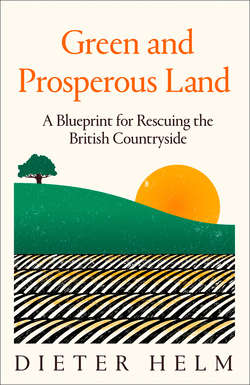Читать книгу Green and Prosperous Land - Dieter Helm, Dieter Helm - Страница 25
Protecting the upper rivers
ОглавлениеRivers start with a trickle from springs on hills and moorlands and mountainsides, and become streams. It is here that the rain tends to be most persistent and floods start. What matters is the ability of the headwaters to hold onto the rainfall and to turn a downpour into a trickle. Damage to river catchments at the source is mapped onto the rest of the catchment.
Run-off is a big problem for many of our rivers, and it has been exaggerated by farming practices. Moorlands drainage and overgrazing has done much damage. Farmers seeking to improve their upland grazing have added drainage. Overgrazing exposes peat and fragile soils, and once the vegetation is stripped off, the waters run much faster. On lower elevations, river catchment sources have sometimes been ploughed up for crops, further increasing soil exposure.
These problems are among the simplest and cheapest to fix in a catchment. The sheep densities can be reduced, the drains blocked up, and the ploughing of the uplands limited. Digging peat can be stopped, and peat bogs restored. All of these measures have economic costs, notably to sheep and, to a lesser extent, cattle farmers, and to maize and other crops lost. But the economic equation is heavily tilted in favour of these measures. Upland sheep farming (more on this later) is at or below the margin of economic viability in any event and heavily dependent on subsidies. Without the subsidies it would be very different, and since the subsidies are public money, redirecting them in the uplands to better water management practices would be a net economic gain.
Indeed, so great are the economic benefits to the water industry just in the narrow terms of managing water quality that water companies have been taking direct action, including through the management of land owned by the companies in the headwaters and by payments to farmers to change their practices. United Utilities helped on its land in the Forest of Bowland Area of Outstanding Natural Beauty (AONB) to rewet and restore blanket bog and add woodlands, and South West Water has been helping the Exmoor Mires Project to conserve and enhance peat bogs at the top of the Exe and Barle river catchments – in both cases out of self-interest. To give an indication of the economics, the Exmoor project has been estimated to have benefits that exceed the costs by a very high eight times.1
In ploughing up some of the steeper slopes, and in particular planting maize on them in the Somerset Levels catchment, soils can be left very exposed, and indeed maize farming has directly contributed to the silting-up of the River Parrot and River Tone, which in turn helped to worsen the great flood of the Somerset Levels in 2014. The farmers then demanded that the Environment Agency dredge the rivers to remove the silt that they had contributed.2
These costs, and the value of the lost soil to the farmers themselves, easily outweigh any possible profits from the crops.3 The Somerset Levels – the ‘summer lands’ – are mostly below sea level and the sea level is rising with climate change. It is an integrated catchment system, not a series of discrete bits to be addressed separately by farming policy, flood defences and dredging, and conservation measures. Natural capital approaches are integrated and offer much better economic returns. Cultivating maize on exposed slopes should be banned on both economic and environmental grounds.
